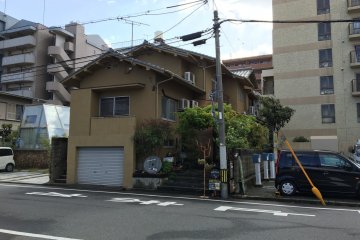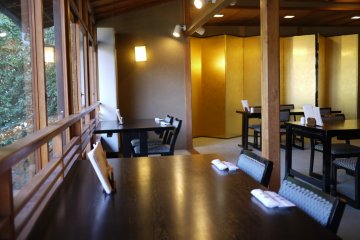
Chisun Hotel Hiroshima
Michelle IshikiChisun Hotel Hiroshima, centrally located in the downtown area, is a great place to stay if you're planning a visit to this world famous city.

Mazda Museum (マツダミュージアム) in Hiroshima underwent a partial renovation in 2025 to enhance the visitor experience. First opened in 1994, the museum showcases Mazda’s history, classic vehicles, and the evolution of the automobile industry, drawing around 50,000 visitors annually. The renovation expands exhibits and displays to create a more immersive experience, helping guests better understand Mazda’s journey, appeal, and vision for the future.
All visits to the Mazda Museum must be booked in advance.
The tour then takes you through a real vehicle assembly line, where visitors can see how different car models are produced. Mazda produces more than a million cars a year and is an innovative player in the Japanese auto industry.
Mazda Motor Corporation, which was founded in Hiroshima in 1920, is still based in the city of its origins. The company museum and part of a factory are open to the public (guided tours in Japanese and English, duration: 90 minutes). To visit the museum it is necessary to make a reservation in advance by phone or email.
Reservations must be made online, as the museum facilities are only available via guided tour. Bookings can be 3 months before the tour date. <ul><li>Japanese tours: 9:15am–11:15am</li> <li>English tours: 2:15pm–4:15pm</li> </ul> <style>.spot-highlight ul { line-height: 25px; padding-left: 20px; }</style>
Mazda’s latest concept car, the MAZDA ICONIC SP, is now on display alongside other exhibits, showcasing the company’s vision for the future.
Stereophonic sound has been introduced to bring motorsport history to life. Visitors can now experience the thrill of competition through a vivid recreation of crowd cheers, race-day excitement, and the roar of the MAZDA 787B engine during its historic first victory at the 59th 24 Hours of Le Mans in 1991.
A new exhibit features a motorsport vehicle powered by biodiesel, giving visitors a closer look at Mazda’s commitment to the challenge of achieving carbon neutrality.
Visitors can now explore Mazda’s unique approach to vehicle manufacturing through a special exhibit featuring a disassembled automobile that embodies our proprietary SKYACTIV technology. By rethinking automotive fundamentals from the ground up, Mazda has created vehicles that deliver both driving pleasure and exceptional environmental and safety performance—shaping the company into what it is today.
By train: from Hiroshima Station take an eastbound local service via the Sanyo or Kure Line and alight at Mukainada Station. It's a 5 minute walk via the south exit of the train station.
By bus: At Hiroshima Station, board services 11–13 (via Mukainada-eki-mae/Mazda-honsha mae) and alight at Mukainada-eki-mae/Mazda-honsha mae after about a 15 minute ride.

Chisun Hotel Hiroshima, centrally located in the downtown area, is a great place to stay if you're planning a visit to this world famous city.

Why Guest House Roku in Hiroshima is a great place for budget travelers looking to make friends

Okonomimura is a Hiroshima-style okonomiyaki theme park located in Shintenchi, Naka-ku, Hiroshima, near the east end of the Hondori shopping street. It has 24 okonomiyaki restaurants, each with a slightly different style and one different selection of ingredients. Okonomiyaki began in the pre-war period as a dish called "Issen Yoshoku" ("" Western food for a dime ""), which was very popular with common people. It consisted of a flour paste cooked with onions, dried shrimp, and spices. After the war, other ingredients such as cabbage, eggs, seafood, buckwheat and wheat noodles were used to improve the diet in these tough times. This is how today's Hiroshima-style okonomiyaki came about. [Photo: Victor Lee / CC BY-NC-ND 2.0]

If you love tofu and traditional Japanese fine dining, you will love Tosho.

Located near the Shinkansen exit, Chelsea cafe is a nice cafe-bar serving cheap lunch sets (under ¥700), is a good choice at night for western dishes & drinks (open ~3am)

MAZDA Zoom-Zoom Stadium Hiroshima, also known as Hiroshima Municipal Stadium, is a ballpark in Minami-ku. It is primarily used for baseball and is home to the Hiroshima Toyo Carp of the Japanese Professional Baseball League. The naming rights of the The stadiums are owned by the automobile manufacturer Mazda, which, in addition to the Matsuda family, is also a major shareholder in Hiroshima Toyo Carp. The stadium has a capacity of 32,000 and was opened on April 10, 2009. The stadium was designed so that it is easily accessible for the disabled, the elderly or those accompanying children. There are also shops selling merchandise and food stalls selling meals and snacks and drinks are served.

Hiroshima Tōshō-gū (広島東照宮) is a Shinto shrine in Hiroshima which was established in 1648. As with all Tosho-gu shrines in Japan, it enshrines the first Shōgun of the Tokugawa Shogunate, Tokugawa Ieyasu.

The Peace Pagoda, or busshari-tō as it it called in Japanese, was built at the instigation of a Bhuddhist monk named Nichidatsu Fujii. Fuji was the founder of the Nipponzan Myōhōji sect of Nichiren Bhuddhism and was inspired to devote his life to promoting non-violence after a meeting with Mahatma Gandhi. His Peace Pagodas in Hiroshima and Nagasaki were the first of some 80 “shrines to world peace” that can now be found around the world.